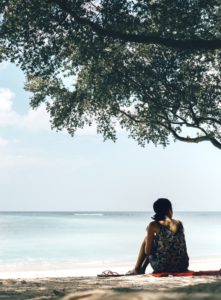In 2013, Darren Agboh faced a crisis. He was finishing up his bachelor’s degree in psychology and researching how people of different races could be friends. Yet, he was wary of interracial friendship. He was a black man, a child of Ghanaian immigrants, and George Zimmerman was just acquitted of charges he faced for shooting Trayvon Martin. This was a troubling time for Agboh and his white friends did not empathize with his pain. “I just felt like they didn’t understand how black people are treated differently in this country.”
Agboh became interested in cross-racial friendship after his jarring experience of adjusting to a predominately white college. He grew up in a diverse place, surrounded by peers of all races. But once he came to college, he witnessed “the white kids hung out together, and the black kids hung out together. I was one of the few kids who mixed with both groups.”
Now that Agboh has been studying friendship across racial lines as a social psychology Ph.D. student, he has a deeper understanding of the importance of cross-race friendships. According to Agboh (and to research), “the more interethnic experiences people have, the less likely they are to make generalizations about other racial groups. Avoiding people of other groups only perpetuates fears and stereotypes.”
I asked Agboh if he thought this meant that people who don’t have experience interacting with people of different racial groups harbor prejudice by default. In response, Agboh cited social categorization theory. It indicates that when people don’t have firsthand experience interacting with people across racial groups, they rely on generalizations and stereotypes.
Interracial friendship is vital for overcoming prejudice. Luckily, Agboh provided advice on making it work.
Understand Why Friends of Color Are Hesitant About Interracial Friendship
I asked Agboh how he reconciles his research on cross-race friendship with his desire to be among Black people after the Trayvon Martin shooting. Agboh shared that he was likely in the “immersion stage” of racial identity. Famous models of racial identity find that people of color go through the immersion stage when they are wary of interacting with white people. They, instead seek full immersion in their racial community. This stage is triggered by experiencing or witnessing prejudice and accompanying fears of prejudice occurring. For Agboh, the Trayvon Martin shooting reminded him that he too could be a target, so he withdrew into his community to feel safe.
“Sometimes it’s hard for white people to understand that people of color need their own spaces to feel like they can be themselves, because white people aren’t wary of experiencing prejudice, like people of color are. White people may feel like—that’s not fair, I’m not prejudiced, why are you avoiding me because you’re assuming that I might be? But all of us have unconscious biases to some degree. Just because people are well-intentioned doesn’t mean that they don’t sometimes make mistakes and that those mistakes don’t cause harm.”
Be Wary of The False Consensus Effect
Agboh adds that if you’re from a group in power, you might be vulnerable to “the false consensus effect,” a bias in which people assume that everyone’s reality matches their own. The false consensus effect means that if a person has never experienced or observed racism, themselves, they often assume that no one experiences racism or that racism doesn’t exist: “This is probably why my white friends did not understand what I was going through; they didn’t have similar experiences with racial prejudice as I did.”
A Key to Interracial Friendship? Just Listen
Agboh advises people from more powerful groups—men, white people, straight people—to ward off this bias by listening. Don’t dismiss, counterargue, or monopolize when friends from less privileged groups share about the inequalities they experience. Recognize their sharing as an opportunity for illumination.
Embrace habitual open-mindedness
Embrace “habitual open-mindedness,” Agboh advises. To do so, each person puts aside their pre-conceived notions when they meet someone new. It’s about allowing each person to be an individual, instead of viewing them stereotypically.
Find Common Ground
Agboh’s other suggestion is to try and foster a common in-group identity with people from other groups. Focus on similarities that you share with them instead of differences. For example, you could focus on being from the same school or sharing the same hobbies.
Avoid Positive Stereotypes
Avoid positive stereotypes to guide your interactions with people of color. When Agboh was in college, he was getting ready to attend an open mic with his friend Dean and Dean’s friends. He was the only black person in the group. Dean and all of Dean’s friends were white. Agboh was too tired to go to the open mic. One of Dean’s friends approached him and said “Come on! You’re black—you’re our energy for this party. Come out with us.”
“The strategy of trying to over-relate by playing off of stereotypes will backfire,” Agboh says. “It still denies a person’s individuality, reducing them to a stereotype.”
Despite his experiences, Agboh remains hopeful that we can develop friendships across racial lines. “There are more similarities about us than there are differences. As we diversify as a country, there will only be more opportunities for us to interact across racial lines. In a rapidly diversifying U.S., the only way groups will Live in harmony is if they interact. It allows us to humanize one another.”
For more on friendship, order my book: Platonic: How the Science of Attachment Can Help You Make- and Keep -Friends.
Note: This article is posted on my Psychology Today blog.

